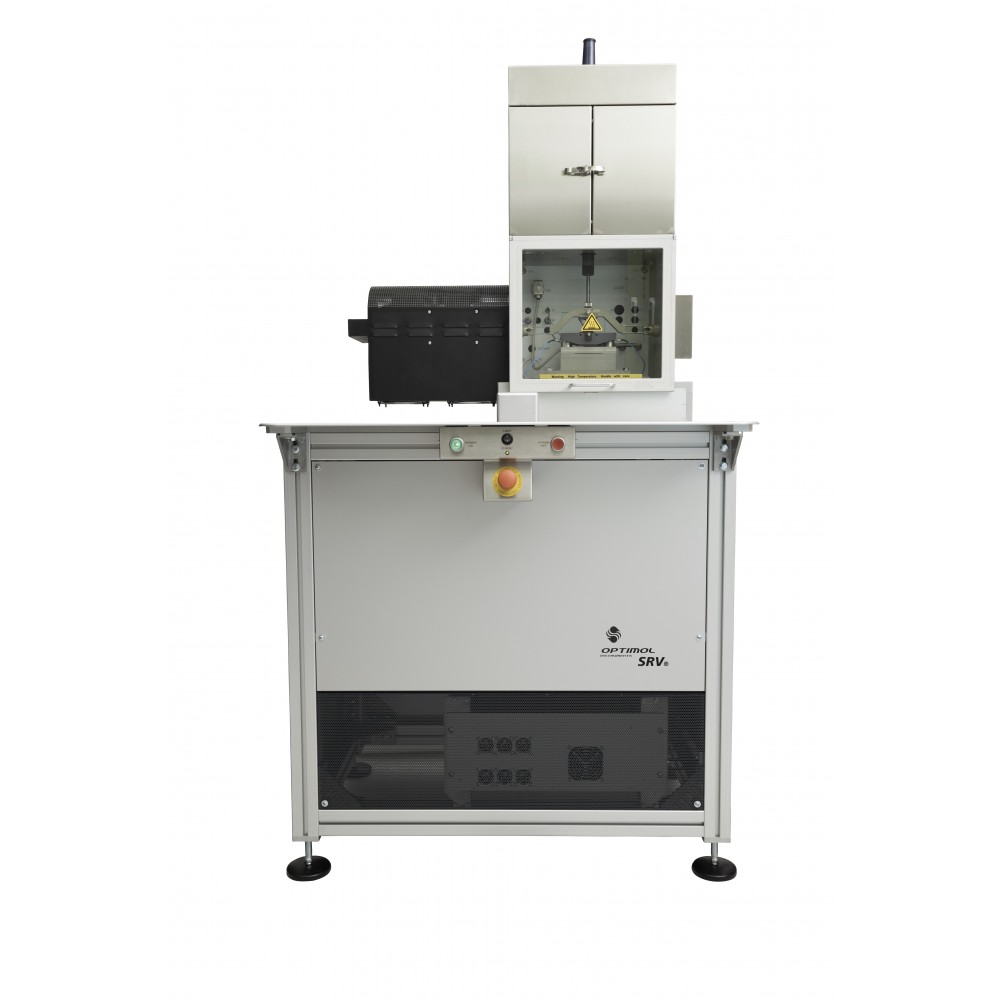SRV®5 Test System
The basic SRV®5 oscillation system - a practical solution for practical problems. This leading worldwide test system allows high-precision investigation of friction and wear in lubricants and materials. As the heart of the Optimol Instruments technology platform, the basic SRV®5 system contains a wealth of innovations that allow many test scenarios. Equipped with OCA software for operation, controlling and test evaluation as well as a PC and touch screen monitor, you can perform all standard SRV® tests in compliance with DIN, ASTM, and ISO specifications, as well as many application-specific checks, with the basic oscillation system.
Background: The basic technical concept
Over fifty years ago, practice-oriented tribological model testing began with a novel development tool for a lubricant laboratory: the SRV® test system. Its claim as a test methodology was that it quickly delivered differentiable and reproducible results. Oscillation was selected as a test movement because it created difficult yet practice-relevant stress conditions in connection with the test force.
The tribometric rationale for representing the coefficient of friction - which is still valid today - is observation of the cyclic transition from static to dynamic friction. Permanent further development has transformed SRV® into a worldwide standard for tribological testing.
For more information on SRV Technology and Optimol Instruments, please visit their website.
- Specification of the test variables frequency. stroke, test force, test temperature, and test duration
- Pressure of the opposing body onto the main body at a defined normal force
- Oscillation of the opposing body on the surface of the main body with a sinusoidal movement pattern
- Measurement of the lateral friction force resulting from the motion of the opposing body on the main body
- Calculating and recording of the friction coefficient during the entire test
- Measurement and recording of total wear during and after the test
Conforms to the specifications of: DIN 51834-1:2010-11, DIN 51834-2:2017-05, DIN 51834-3:2008-12, DIN 51834-42012-06, DIN 62136-1:200-09, DIN 51834-5, DIN 51834-6, DIN 51834-7, DIN 51834-8, DIN 51834-9, DIN 62136, part 2, DIN 50324:1992-07, DIN EN 1071-13, DIN EN 1071-12, ASTM D6425-11, ASTM D5706-16, ASTM D5707-16, ASTM D7217-16, ASTM D7421-16, ASTM D7420-11, ASTM D7594-16, ASTM D7755-16, ASTM G99-05, ASTM D6185-08, NB/SH/T 0847, NB/SH/T 0784, NB/SH/T 0882, ISO 19291-2016:12, ISO 7148-1:2014-07, ISO 7148-2:2014-07, ISO 20808
Type of movement:
The oscillation module allows continuous or discontinuous translation at sliding speeds of 0.0001 m/s up to 0.5 m/s. Optional control functions are available for simulating practice-compliant movement patterns.
Contact geometries:
Friction contacts with abstracted contact geometries (e.g. standard tests) and a wide range of application-specific contact geometries can be realized. A wide range of standard test bodies in secured SRV® quality is available. For application-specific contact geometries, your original parts can be integrated into the friction contact without time-consuming preparatory work. Tests can be used with or without an intermediate medium. The friction conditions simulated in this manner run from mixed to dry friction.
Possible combination with the rotation drive (Combi Drive):
The rotation and oscillation drives as well as their measurement sensors can be combined. This results in a wealth of simulation options.
- Basic Oscillation System
- Rotation System
- Vacuum Test System
- Extreme Atmospheres System
- Rolling 2 Disk System
Our specially developed system software can be used cross-platform in all test system variants. It is designed to process huge amounts of data. Its basic tasks include system control, operation and test evaluation. Clearly structured functions allow convenient recording, evaluation, analysis, and presentation of measurement results.
- Software can be used across platforms
- Easy recording, evaluation, analysis, and presentation of measurement results
- Ergonomically positioned monitor with touchscreen operation
- Online display and evaluation of results
- Graphical and numerical representation of results
- Simple data management facilitates structured testing
- Network capability, network-wide system control
- Network-wide view of process data
- Remote control of the test system across all locations via VPN channel
- Overview of current machine status on display


